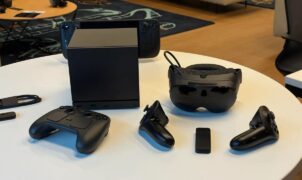Prince of Persia: The Lost Crown leans quite heavily on ancient Persian mythology and history, and King Darius I (the Great) plays quite a role…
Following the successful release of Prince of Persia: The Lost Crown, the development team thanked the community in a message. Despite an initially divisive return to 2D, Prince of Persia: The Lost Crown received positive reviews. (We liked it, too; see here!) It’s not just about the critics, as fans have also voiced their support for the Metroidvania twist introduced in the series.
However, another reason the game won over many was its clever incorporation and use of Persian mythology and history.
The new Prince of Persia wastes no time at all before throwing players into the mythological deep water. From historical battles to real-life dynasties, to mythological creatures, ancient traditions and legends, the game fully embraces the fabled past of Persia. He naturally tries to weave it into his own original story.
But while many of Prince of Persia: The Lost Crown’s mythological references only come up once in a while, there is one ancient figure who keeps popping up throughout the game, in collectibles, in dialogue, and even in person towards the end of the game. And this is King Darius I (Dareios in Greek). Like the other mythological influences in the game, the role of King Darius is heavily fictionalized. But the ruler did exist, and his story is quite exciting.
Prince of Persia: The Lost Crown is the true story of King Darius the Great
Before diving into the real history of King Darius the Great, it is important to note that, like any other ancient historical figure, there are many conflicting accounts of the ruler’s life and deeds. Interestingly, Darius actually has one of the most important resumes of all time. The narrative of his own life appears in the Behistun inscription. This is an ancient rock carving in western Iran that played a significant role in deciphering cuneiform writing.
King Darius lived between 550 and 486 BC; He ruled from 522 until his death.
In the Behistun Inscription, Darius recounts his rise to power. According to his claim, when he accompanied the son of King Cyrus, Cambyses, to Egypt, a small rebellion broke out among the people. This rebellion began when a man named Gaumata disguised himself as Bardiya, the younger brother of Cambyses. He convinced the Persian people to let him rule after the death of Cyrus. According to Darius, Cambyses killed Bardiya. He hastened to Persia to put down the rebellion, but on the way, he received an injury which became infected and led to his death. Darius then joined forces with some other Persian leaders and killed the man still posing as Bardiya, although it is unclear how much of this is true.
It is not clear whether Darius himself killed Cambyses, nor is it clear whether there ever was an impostor at all.
Darius’ accession to the throne was purely technical. His descent hardly placed him in the royal family, so his ascension to the throne caused great controversy throughout the Persian Empire. Elam, Babylon, and Egypt refused to recognize him as a true king. They all chose their own ruler, which incited a serious civil war. Over the course of three years, Darius fought 19 battles with his rivals, defeating them all, and eventually cemented his position as King of Persia.
King Darius continued to expand the boundaries of the Persian Empire
After defeating the multitude of rebellions in the Persian Empire, Darius turned his sights to the rest of the world. Especially towards the lands on the edge of the empire’s borders. In one of his first successful campaigns, Darius expanded into the Punjab after taking control of the Indus Valley. He then turned his attention to the north and launched an extensive campaign against the Scythians. Although a successful start, Darius’s army was forced to retreat after failing to engage the Scythians in a full-scale battle. Herodotus, the father of Greek historiography, gives a detailed account of the life and campaigns of Darius.
The most famous of the latter is perhaps his venture against the ancient Greek city-states, which basically ended in success (he conquered Thrace and made Macedonia a vassal), but his heavy defeat against Athens and its allies in the Battle of Marathon (490 BC) marked the beginning of his further conquests.
The long-term results of King Darius’ reforms
Although King Darius’ achievements in wars were more than enough, it was actually his fascination with infrastructure and architecture that had the greatest impact on the world. In addition to introducing a reorganized taxation system, establishing a universal currency system for the entire Persian Empire, and creating a new code of laws, King Darius built many impressive structures throughout the country. From the gigantic new palace in the capital city of Susa (see image above!) to the royal road that stretched over 1,700 miles across almost the entire empire, Darius’ architectural achievements continue to amaze posterity.
Source: X, Britannica, National Geographic
Truly a huge thank you to you all. 💖 pic.twitter.com/sXxTtUPeFo
— Prince of Persia™ (@princeofpersia) January 23, 2024


















Leave a Reply